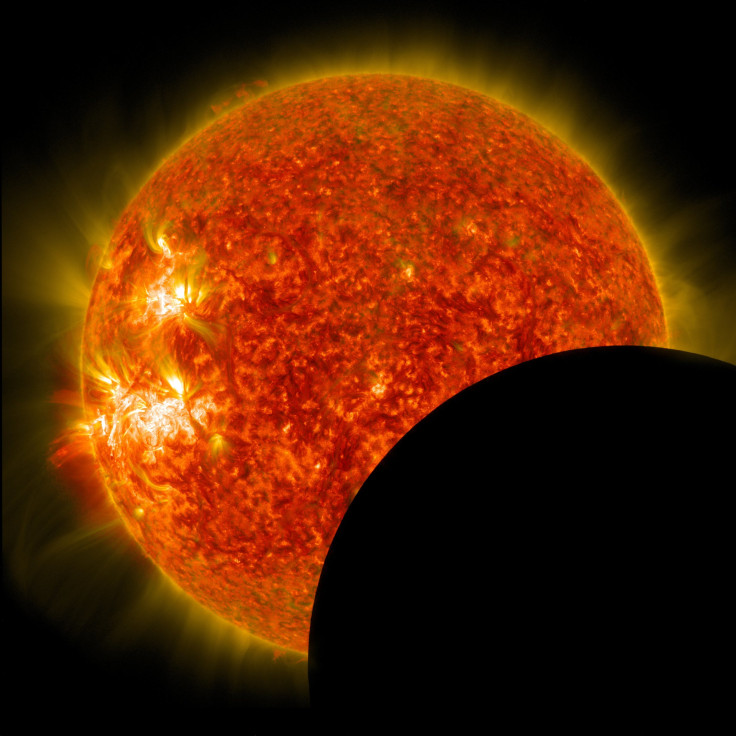NASA Offers Safety Tips For Viewing Aug 21 Solar Eclipse

On Aug. 21, the moon will block out the sun completely, as seen from the United States, following a narrow band across the country while the shadow of the moon moves from the west coast to the east. The total solar eclipse will the first across the entirety of the contiguous United States since June 8, 1918 — almost 100 years ago.
Understandably, there is much excitement around the astronomical event, with viewing parties already being planned in various places along the eclipse’s path, which starts in Oregon and ends in South Carolina. If you plan to watch the eclipse too, either by traveling to a place from where it is visible in its entirety, or by remaining where you are to see a partial eclipse (the partial eclipse will be visible from every state in the country), you should keep in mind some safety tips.
Read: NASA Wants To Learn About Earth’s Energy During Solar Eclipse
Even though it is an eclipse, you should still not look at the sun directly with your naked eyes, since that could damage your vision. NASA has offered a helpful list of things to do and not do for viewing the eclipse.

For starters, do not use ordinary sunglasses, irrespective of how dark they are and what UV protection they offer, to look at the eclipse directly. Do not use any homemade filters either. Get your hands, instead, on a pair of eclipse solar glasses or a handheld solar viewer that allow you to look at the sun directly and safely.
NASA recommends you check the safety and authenticity of the glasses before using them. To do that, make sure the glasses have certification information that conform to the ISO 12312-2 international standard, and that they have the manufacturer’s information printed somewhere on them. However, if the lenses are scratched or wrinkled, or if the glasses are older than three years, they should not be used.
When using the special glasses, make sure you look away from the sun before taking them off. And do not look at the sun through a telescope or camera or any other optical device while you have the special glasses on. These devices concentrate solar rays, which will then damage the filter and enter your eyes, leading to serious injury.
As of now, five manufacturers of these solar filters have been verified by NASA’s partner, the American Astronomical Society, as adhering to the ISO 12312-2 standard. These are American Paper Optics, Baader Planetarium (AstroSolar Silver/Gold film only), Rainbow Symphony, Thousand Oaks Optical, and TSE 17. Over 6,800 libraries across the country are distributing safety-certified glasses, and a list of these libraries can be found here.
For those who can’t get hold of one of these solar filters, there is an alternative way to watch a partial eclipse — pinhole projection. A small hole, such as made with a pencil in a sheet of paper, or even a small gap between your fingers, can stream sunlight onto a temporary screen, like another sheet of paper or the ground. With your back to the sun, let the light in through the hole and watch the eclipse on the screen. Remember to watch the screen only, and not the sun directly.
Read: How And Where To See The August 21 Total Solar Eclipse
“While NASA isn’t trying to be the eclipse safety glasses ‘police,’ it’s our duty to inform the public about safe ways to view what should be a spectacular sky show for the entire continental United States. It’s important that individuals take the responsibility to check they have the proper solar eclipse viewing glasses. With the eclipse a month away today, it’s prudent to practice ahead of time,” Alex Young, associate director for science in the Heliophysics Science Division at NASA's Goddard Space Flight Center in Greenbelt, Maryland, said in a statement Friday.
NASA will also broadcast a special program on the eclipse, with real-time coverage of the celestial event as it moves from coast to coast. The NASA TV program will include images of the eclipse as seen from the International Space Station, high altitude aircraft and balloons, as well as ground observations.
The Aug. 21 eclipse will be visible in totality from land only in the United States, while Canada, Central America, the Caribbean, Mexico and northwestern Europe will witness a partial eclipse.
© Copyright IBTimes 2024. All rights reserved.











